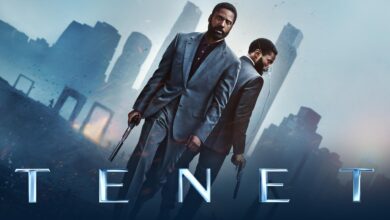Three Identical Strangers 2018
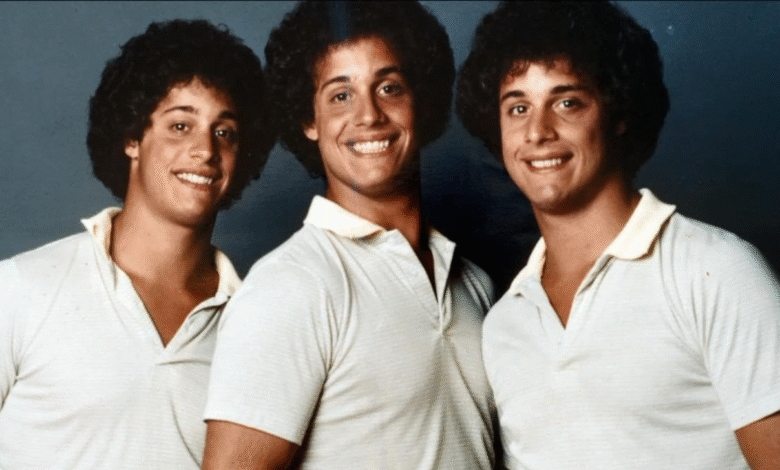
Three Identical Strangers is a 2018 documentary film directed by Tim Wardle, about the lives of Edward Galland, David Kellman, and Robert Shafran, a set of identical triplets who were adopted by separate families as infants. Combining archival footage, reenactments, and current interviews, the film recounts how the brothers accidentally discovered each other in New York in 1980 at the age of 19, their public and private lives in the years that followed, and their eventual discovery that their adoption was part of an undisclosed “nature versus nurture” scientific study of the development of identical siblings raised in different economic circumstances.
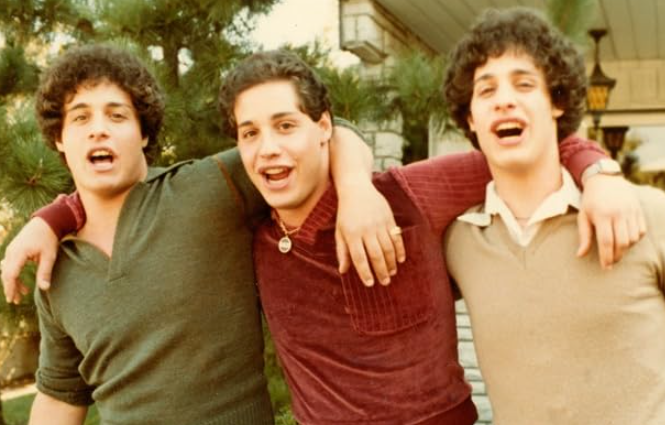
The film depicts how Robert Shafran discovered he had a twin brother after arriving on campus at a New York community college in 1980 and being repeatedly greeted by students and staff who mistook him for Eddy Galland. The two men met that evening, and upon learning that they were both adopted, quickly concluded that they were twins. A few months later, this fascinating story was made known to David Kellman, whose resemblance and identical adoption circumstances suggested that the three were actually identical triplets.
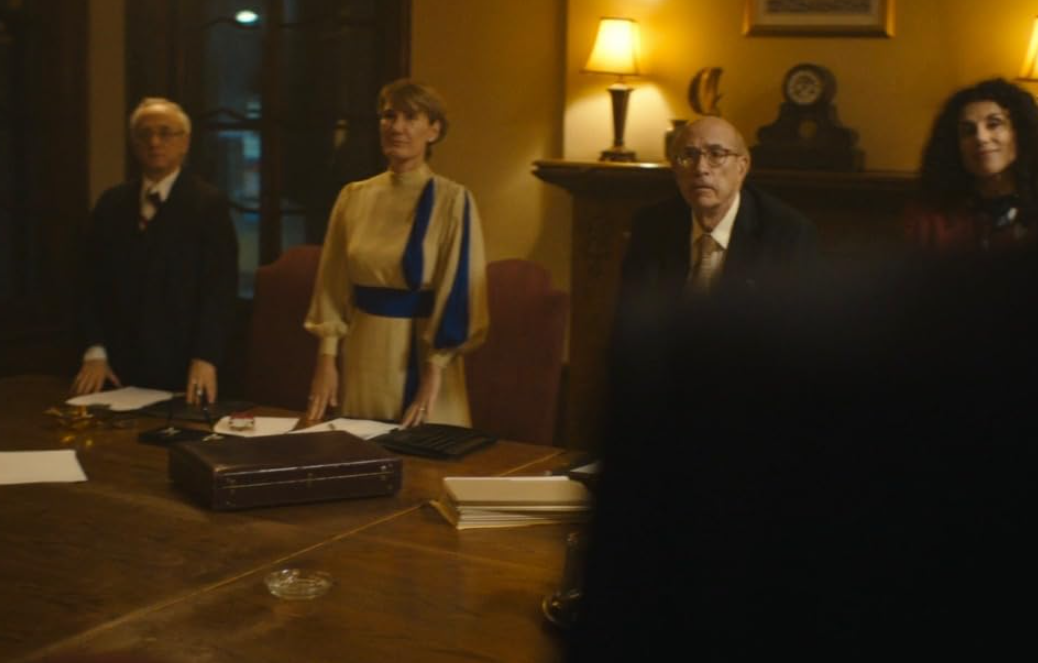
The brothers found themselves similar in more ways than just their appearance: they had the same food preferences, smoked the same brand of cigarettes, wrestled in high school, and had both exhibited signs of separation anxiety as children. They quickly became minor media sensations, appearing on talk shows like The Phil Donahue Show and celebrating their newfound brotherhood, moving in together and opening a restaurant called Triplets, which they ran together.
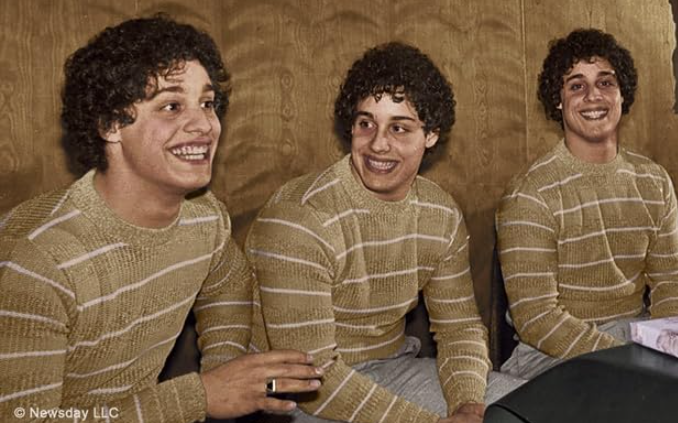
As infants, each boy participated in a study by psychiatrists Peter B. Neubauer and Viola W. Bernard, under the auspices of the Jewish Guardian Council, which included home visits and periodic assessments, the true purpose of which was never explained to their adoptive parents. After discovering that the boys were triplets, the adoptive parents sought further information from the Louise Wise adoption agency, which said it had separated the boys because it would be difficult to place three brothers in the same household.
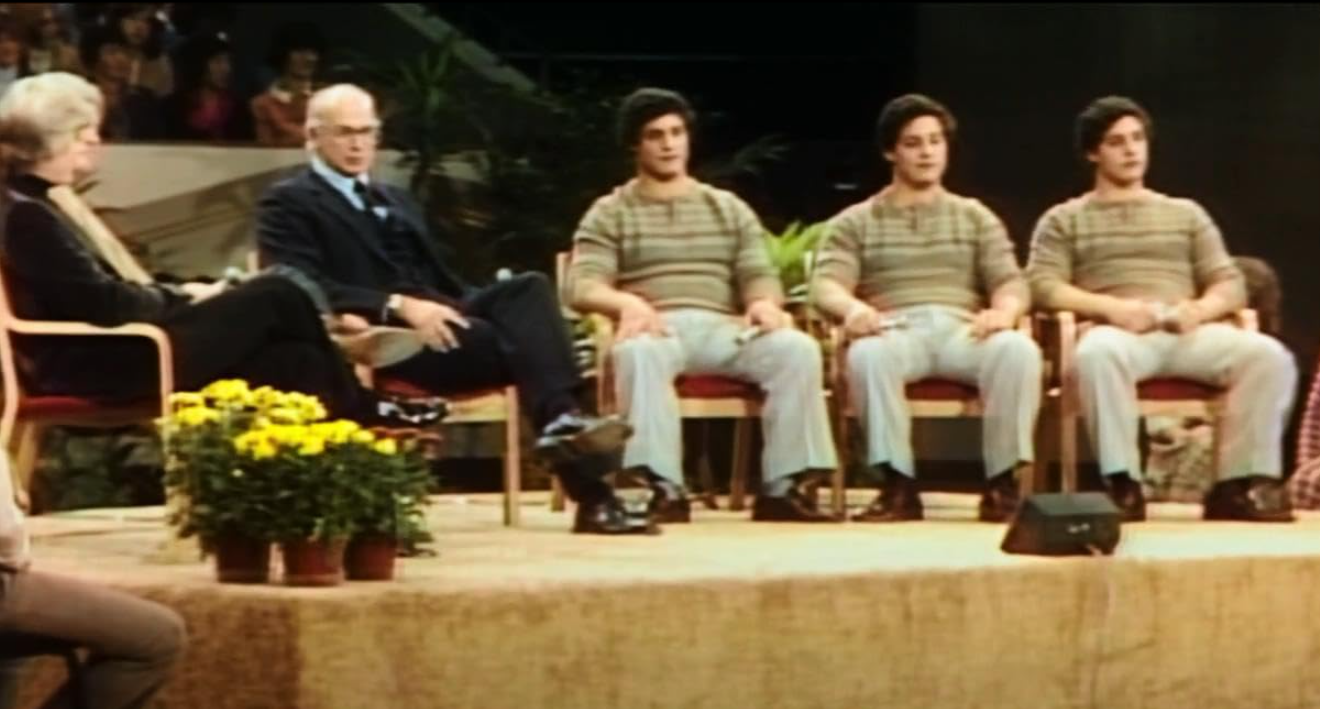
However, upon further investigation, it is discovered that the infants were intentionally separated and placed with families of varying parenting styles and economic status—a blue-collar family, a middle-class family, and a wealthy family—as part of a human experiment. Throughout the film, the siblings question whether they and the other twins participating in the study were chosen because their parents reported signs of mental illness before having children, but a researcher interviewed flatly denies this, saying that the study was simply about parenting.
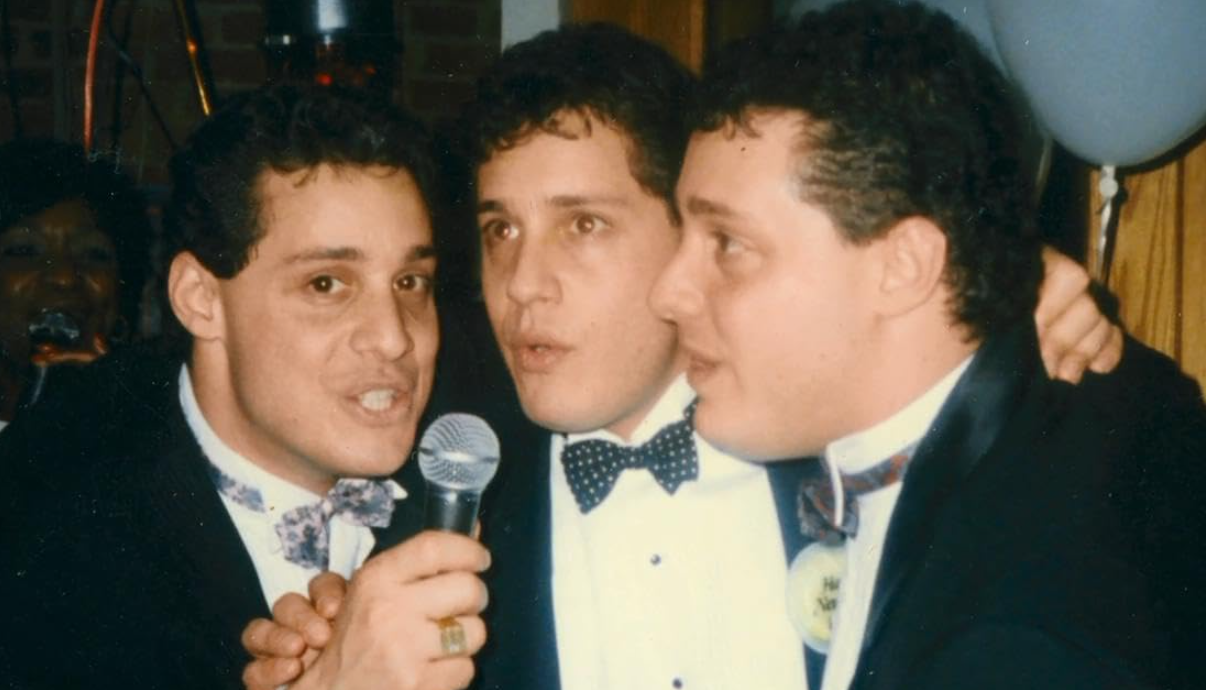
Over time, the differences between the triplets become apparent and their relationship becomes strained, especially due to the stress of running their restaurant. All three struggled with mental health issues in their youth, and Galland, who was diagnosed with manic-depressive disorder, committed suicide in 1995.
The results of the experiment were never made public, and the files were sealed until 2066. However, at the end of the film, on-screen text explains that Kellman and Shafran were both given access to the files, although they were heavily redacted and no official conclusions were made.


